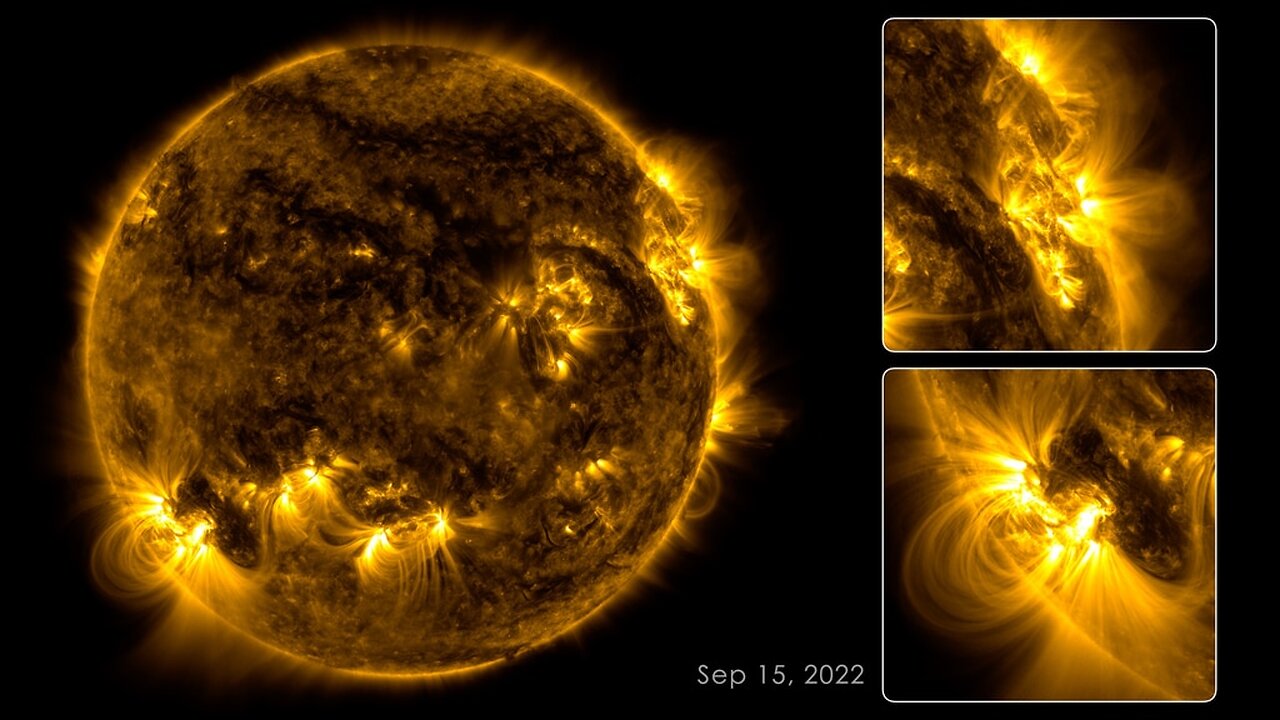Premium Only Content

133 Days on the Sun
This 133-day time lapse of the Sun at 17.1nm shows brilliant active regions, dynamic loops of plasma and numerous solar eruptions.
Music (in order): Concave Hexagon, Heptagon, Tetrahedron, Triangular Prism, Square-based Pyramid, Irregular Quadrilateral, Equilateral Triangle, Dodecahedron, Icosahedron, all from "Geometric Shapes" written and produced by Lars Leonhard.Credit: NASA's Goddard Space Flight Center/SDO
Watch this video on the NASA Goddard YouTube channel.
This video chronicles solar activity from August 12 to December 22, 2022, as captured by NASA’s Solar Dynamics Observatory, or SDO . From its orbit in space around Earth, SDO has steadily imaged the Sun in 4K x 4K resolution for nearly 13 years. This information has enabled countless new discoveries about the workings of our closest star and how it influences the solar system.
With a triad of instruments, SDO captures an image of the Sun every 0.75 seconds. The Atmospheric Imaging Assembly (AIA) instrument alone captures images every 12 seconds at 10 different wavelengths of light. This 133-day time lapse showcases photos taken at a wavelength of 17.1 nanometers, which is an extreme- ultraviolet wavelength that shows the Sun’s outermost atmospheric layer: the corona. Compiling images taken 108 seconds apart, the movie condenses 133 days, or about four months, of solar observations into 59 minutes. The video shows bright active regions passing across the face of the Sun as it rotates. The Sun rotates approximately once every 27 days. The loops extending above the bright regions are magnetic fields that have trapped hot, glowing plasma. These bright regions are also the source of solar flares, which appear as bright flashes as magnetic fields snap together in a process called magnetic reconnection.
While SDO has kept an unblinking eye pointed toward the Sun, there have been a few moments it missed. Some of the dark frames in the video are caused by Earth or the Moon eclipsing SDO as they pass between the spacecraft and the Sun. Other blackouts are caused by instrumentation being down or data errors. SDO transmits 1.4 terabytes of data to the ground every day. The images where the Sun is off-center were observed when SDO was calibrating its instruments.
SDO and other NASA missions will continue to watch our Sun in the years to come, providing further insights about our place in space and information to keep our astronauts and assets safe.
The music is a continuous mix from Lars Leonhard’s “Geometric Shapes” album, courtesy of the artist.
-
 1:21:34
1:21:34
Josh Pate's College Football Show
1 day ago $17.50 earnedWeek 11 Reaction Show: Alabama Rolls LSU | Ole Miss Owns UGA | Miami Falls | AP Poll vs JP Poll
55.7K6 -
 30:01
30:01
Shrouded Hand
1 day ago $11.83 earnedThree Disturbing Missing Child Cases
36.6K10 -
 8:27
8:27
Rethinking the Dollar
19 hours agoHow to Navigate the Crypto Boom vs. Metals Drop in 2024
23.5K5 -
 1:00:23
1:00:23
PMG
17 hours ago $8.43 earned"The Dark Alliance of Big Pharma & Big Food w/ Dr. Tenpenny"
20.6K5 -
 0:44
0:44
OfficialJadenWilliams
14 hours agoiPhone password
13.1K9 -
 13:16
13:16
Degenerate Jay
15 hours ago $8.29 earnedHow Stellar Blade Did Outfits Right
41.8K16 -
 1:01:55
1:01:55
Bright Insight
9 days agoAncient Apocalypse Review LIVESTREAM
117K85 -
 1:03:31
1:03:31
Steve-O's Wild Ride! Podcast
4 days ago $20.64 earnedDave Mustaine Takes Sh*t From Nobody - Wild Ride #242
58.7K25 -
 6:57:29
6:57:29
MissesMaam
10 hours agoRumblers Survive Cannibals and Mutants | Sons of the Forest 💚✨
45.2K -
 3:02:59
3:02:59
PudgeTV
15 hours ago🔵 Mod Mondays Ep 46 | Cancel This Podcast
36.5K